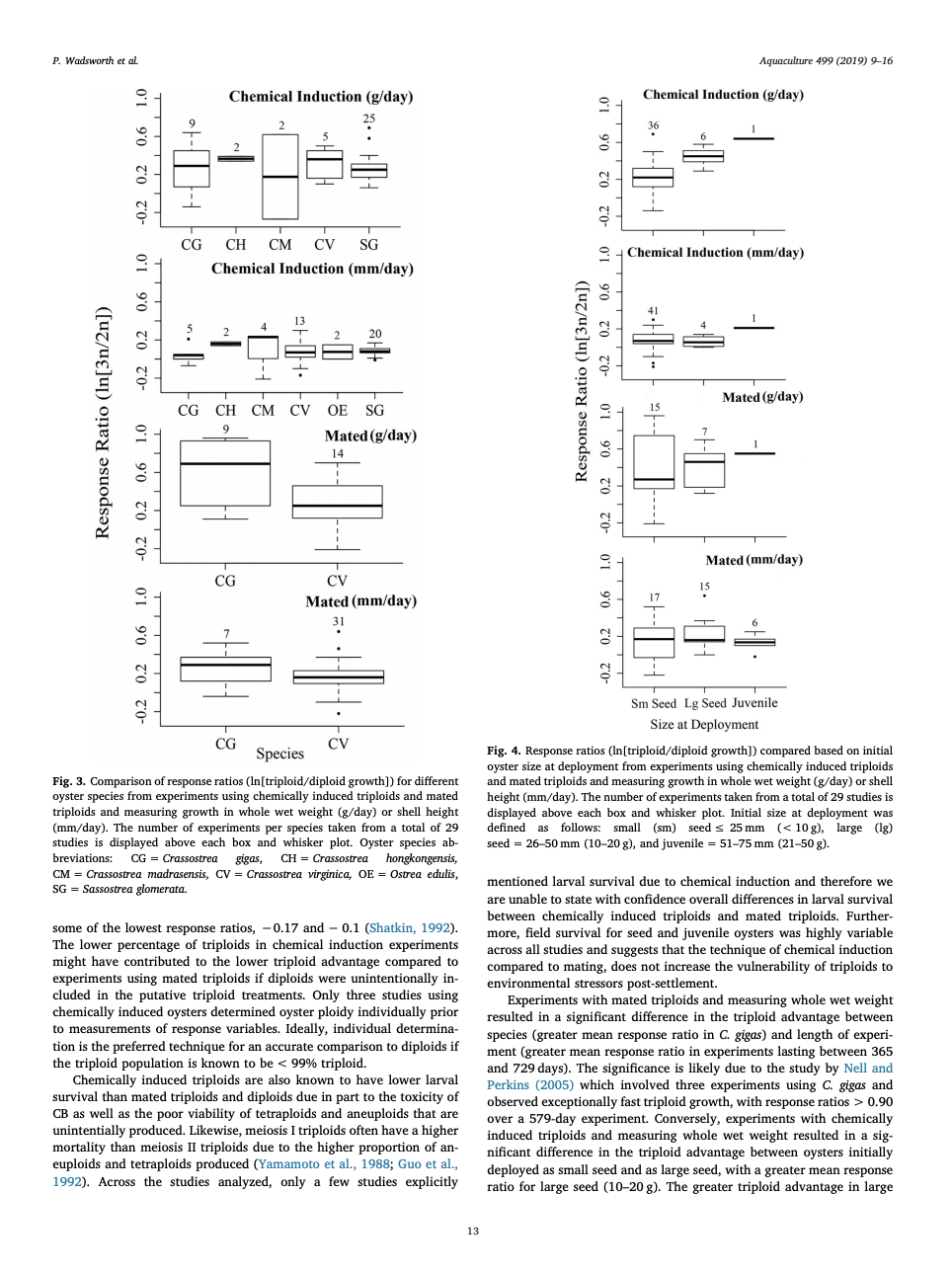Keyword: intraspecific variation

Wadsworth, P., A. E. Wilson, and W. C. Walton. 2019. A meta-analysis of growth rate in diploid and triploid oysters. Aquaculture 499:9-16.
Abstract
Around 34 years ago, the first reports on the performance of triploid oysters were published. Since then, triploid oysters have offered many benefits to the oyster industry, such as faster growth, improved meat quality, partial sterility, and increased survival due to disease resistance. However, the extent of a triploid growth advantage, in particular, can vary across studies, measurement parameters, environmental conditions and husbandry practices. To quantitatively compare diploid and triploid oyster growth rates, a meta-analysis was performed with 29 published studies using triploid oysters produced by chemical induction or by crossing diploid and tetraploid oysters (i.e., “mated triploids”). The difference in growth rate between ploidy was evaluated using natural log transformed response ratios (ln[3n/2n]) in a random-effects model weighted by sample size. The positive response ratios in 126 of the 148 independent experiments showed a significant growth advantage of the triploid over the diploid. On average, mated triploids grew 20% faster than diploids in shell height and 49% faster in whole wet weight. While chemically induced triploids had marginally less growth advantage than mated triploids, growing on average 8% faster than diploids in shell height and 31% faster in whole wet weight. Response ratios for experiments using mated triploids and measuring whole wet weight was significantly affected by species and length of study, while response ratios for experiments using chemically induced triploids and measuring whole wet weight was significantly affected by initial size at deployment. Conversely, response ratios for experiments using mated triploids or chemically induced triploids and measuring shell height were not affected by any tested moderator. The lack of a triploid growth advantage in 15% of the experiments (22/148) could have been influenced by a variety of factors including intraspecific variation, differences in sampling, husbandry practices, and environmental conditions.